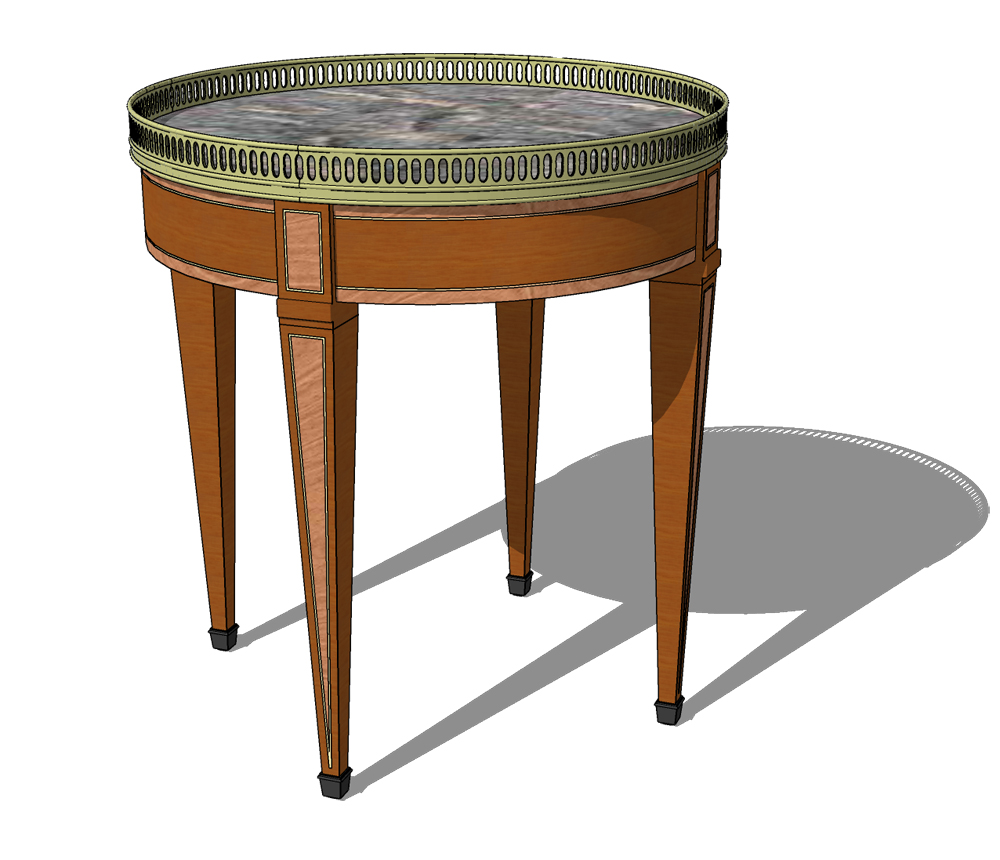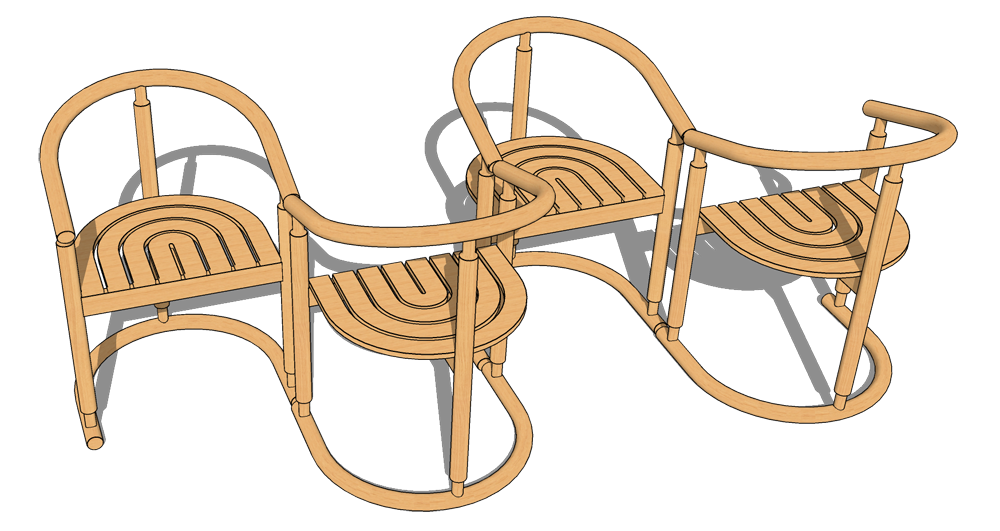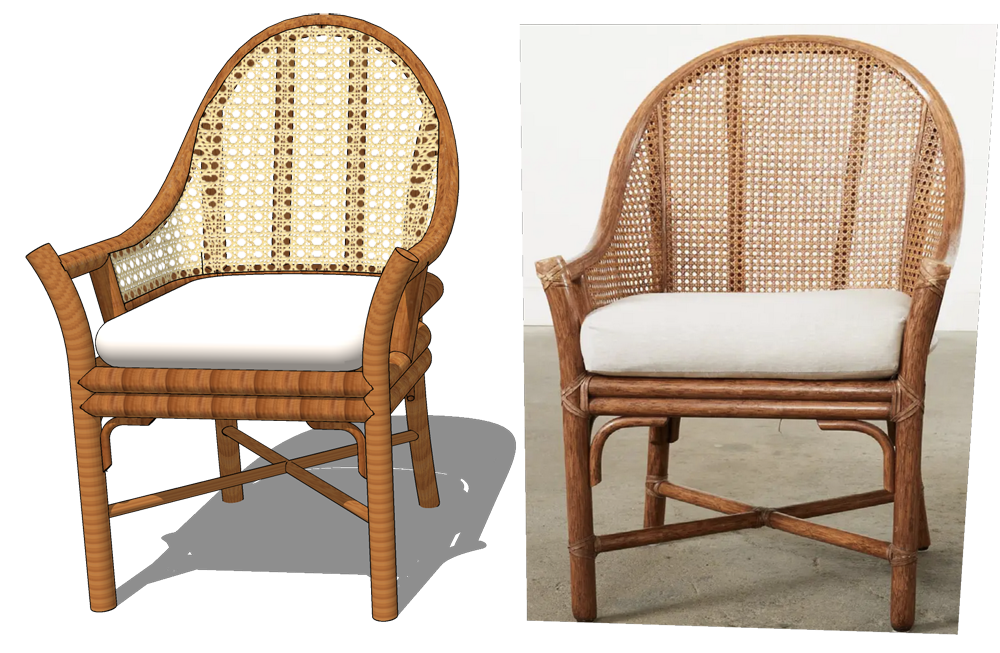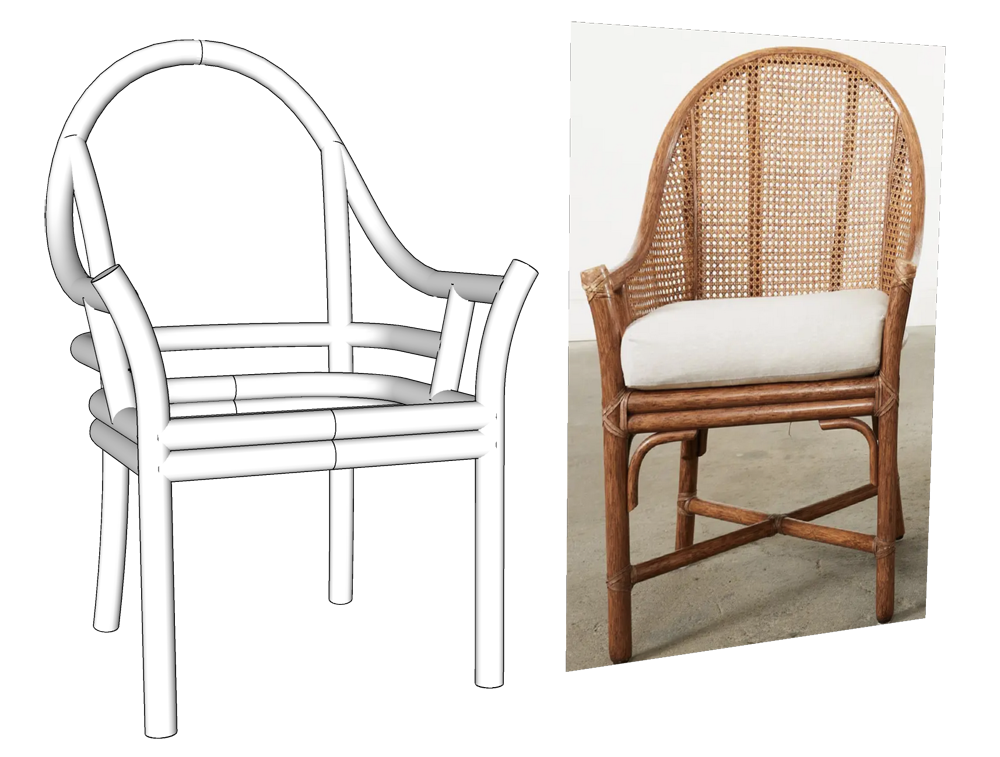 My latest: A model of a cast-iron console table with marble top. The original was made in Italy in about 1880. Many uses of Fredo6's Loft-along-path for the legs and plenty of Follow Me commands for everything else. Not an exact copy,but close.
My latest: A model of a cast-iron console table with marble top. The original was made in Italy in about 1880. Many uses of Fredo6's Loft-along-path for the legs and plenty of Follow Me commands for everything else. Not an exact copy,but close.
Enjoy.
dh
Best posts made by davidheim1
-
Old cast iron
Latest posts made by davidheim1
-
RE: Easiest. Model. Ever.
Thanks, HornOxx. It really was easy: half the front profile extruded around a semicircle.
-
Easiest. Model. Ever.

Saw this Italian fiberglass chair from the 1980s on the 1stdibs.com web site. Took maybe 20 minutes to import an image, scale it, and create the model.
Enjoy.
dh -
Old cast iron
 My latest: A model of a cast-iron console table with marble top. The original was made in Italy in about 1880. Many uses of Fredo6's Loft-along-path for the legs and plenty of Follow Me commands for everything else. Not an exact copy,but close.
My latest: A model of a cast-iron console table with marble top. The original was made in Italy in about 1880. Many uses of Fredo6's Loft-along-path for the legs and plenty of Follow Me commands for everything else. Not an exact copy,but close.
Enjoy.
dh -
Doing it the hard way

Saw this side table on 1stdibs.com. It's attributed to Howard Verbeck, a decorator who fathered the Hollywood Regency style. He imported the Louis XVI-style table from France in the 1920s. I got it into my head that I wanted to model the gallery around the marble top. Bad idea. Took me a few minutes to work out the basic design and use Follow Me to repeat it 160 times around the circumference. Then it took me three days to clean up what I had wrought.
Enjoy. -
RE: Wicker chair finished
My apologies to ntxdave for not answering his questions for weeks. Here goes, in no particular order.
Most of my models are based on images from the 1stdibs.com web site. It's a super resource for new and period furniture. All I need are good front and side views. I'll import the images to SketchUp and use the tape measure in conjunction with option/control to scale the images. Then I trace over important parts. In many cases, though, there isn't a clear image of a part, so I'll wing it.
There are a couple of ways to model curves that don't fall on the red/green/blue axes. The simplest way is to model a curved piece on-axis, make it a component, then rotate the component to the angle seen in the image I'm following.
Next-easiest is to use a Fredo6 plugin, Loft Along Path. Here, you generate a curve and space outlines of a piece along the path. When it works, it's wonderful. But it can generate some ridiculous and unexpected results. I did use the plug-in successfully to model the back/arms of Hans Wegner's iconic The Chair. In real life, the back/arms are made from three pieces that are basically hand-carved. In SketchUp, it is possible to model a piece that twists from vertical to horizontal as it follows a curved path.
Finally, use a bezier curve plug-in and follow Dave Richards's instructions. On that wicker chair, create an L-shaped frame representing half the width and the full depth of the chair. Anchor the ends of the bezier curve at the front of the L (the front of the arm) and the other end at the top (the height of the back). Pull the control point on the curve until it hits a corner parallel to the height of the back. Dave R. can explain it better and more succinctly. In any event, the curve becomes a path for Follow Me. Works great for Thonet bentwood chairs, too. -
RE: Wicker chair finished
 Thanks, all.
Thanks, all.
Andn here's a little bit of dessert I enjoyed after the main course of that wicker chair. It's a set of four Allmilmo dining chairs, made in Germany in the 1980s. The originals are ash. The design is very similar to a child's chair that Ikea sold in the 1960s.
Enjoy. -
Wicker chair finished

Finished the chair model just now. And, yes, Tuna, I used a projected texture for the caning on the back. Had to do it in three sections to avoid having the texture go all distorted around the bends. Used BoolTools 2 to join the pieces together. In a perverse way, I like modeling this kind of furniture—begin with a few basic dimensions, then wing it for sizes and shapes.
Enjoy. -
Work in progress

A rattan dining chair, made in California a quarter-century ago. Still a few pieces to add, plus the cane back. No plans to add the rawhide wrapping at the joints, though. Life is too short.